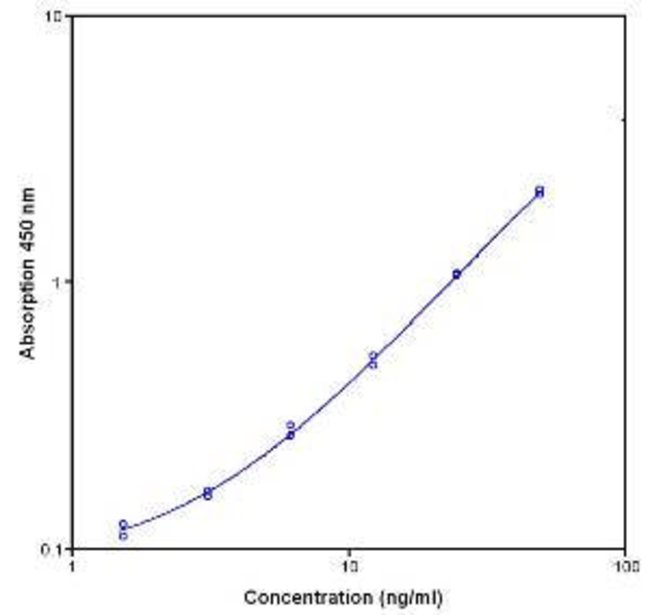$ 739.20
Details
The Human Soluble Endothelial Leukocyte Adhesion Molecule-1 (ELAM-1) (Hu E-selectin) ELISA quantitates Hu sE-Selectin in human serum, plasma, cell culture supernatants, urine, amniotic fluid, bile, or other body fluids. The assay will exclusively recognize both natural and recombinant Hu sE-Selectin Principle of the method The Human sE-Selectin solid-phase sandwich ELISA (enzyme-linked immunosorbent assay) is designed to measure the amount of the target bound between a matched antibody pair. A target-specific antibody has been pre-coated in the wells of the supplied microplate. Samples or controls are then added into these wells and bind to the immobilized (capture) antibody. The sandwich is formed by the binding of the second (detector) antibody to the target on a different epitope from the capture antibody. An antibody conjugated with enzyme binds the formed sandwich. After incubation and washing steps to rid the microplate of unbound substances, a substrate solution is added that reacts with the enzyme-antibody-target complex to produce measurable signal. The intensity of this signal is directly proportional to the concentration of target present in the original specimen. Rigorous validation Each manufactured lot of this ELISA kit is quality tested for criteria such as sensitivity, specificity, precision, and lot-to-lot consistency. See manual for more information on validation.E-selectin (CD62E, ELAM-1, and LECAM-1) is a 115 kD type I membrane protein and a member of the selectin family. E-selectin is highly expressed on activated endothelial cells (IL-2, TNF- alpha, other cytokines can increase expression) and can also be expressed on endothelial cells in the skin, bone marrow and placenta. E-selectin is involved in tethering and leucocyte rolling on activated endothelium at inflammatory sites and may also play a role in tumor metastasis and angiogenesis. E-selectin binds to both Siayl Lewis X (CD15s) and PSGL-1 (CD162). The HCD62E antibody has been shown to recognize human E-selectin and to be useful for flow cytometry. In vitro experiments have shown that IL-1, TNFalpha and bacterial wall components like lipopolysaccharides induce the transcription of E-selectin in a NFkB dependent signaling cascade. E-selectin has been associated with blood vessel endothelium in diverse inflammatory situations.


